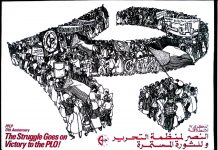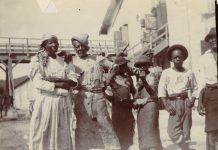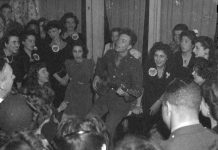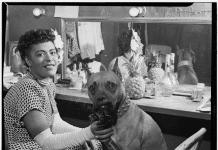
Indhold
- Forord
- Artikler På dansk – Norsk – in English – auf Deutsch
- Biografier/Biographies
- Sites
- Musik/video/audio/downloads
- Værker/ Works
- Litteratur/ Litterature (books etc.)
- Diverse om opera/ Misc. on opera
- Om samtiden/ on the Mozart times
- Se på Socialistisk Bibliotek
Forord
Komponisten Wolfgang Amadeus Mozart (fødes i Salzburg 27.1.1756 – dør i Wien 5.12.1791). 250-året for Mozarts fødsel i 2006 gav et væld af medieomtale, -udsendelser og arrangementer.
Her er lagt vægt på den politiske opfattelse af Mozart og hvordan de politiske forhold udtryktes gennem hans liv og musik. Mozarts og hans musik kan kun fuldt ud forstås, værdsættes og forklares som del af en verden i forandring.
Både Mozarts eget korte liv og hans musik – især operaerne, og især de tre fra sidste halvdel af 1780’erne med tekst (libretto) af Lorenzo de Ponto – var åbenlyst præget og inspireret af en verden i opbrud og påbegyndt overgang, fra feudalismen til borgerlige samfund, fra adelsmagt til borgerskabet som herskende klasse. Den amerikanske revolution (1775-83) og den store franske fra 1789 fandt sted, mens Mozart levede, og inden for den fælles ideologiske ramme, som også prægede Mozart: Oplysningstiden.
Nedenfor er der referencer til artikler, sites, værker, litteratur, biografier, div. om opera, om samtiden og musik/audio/downloads.
Jørgen Lund. Påbegyndt 17.01.2006
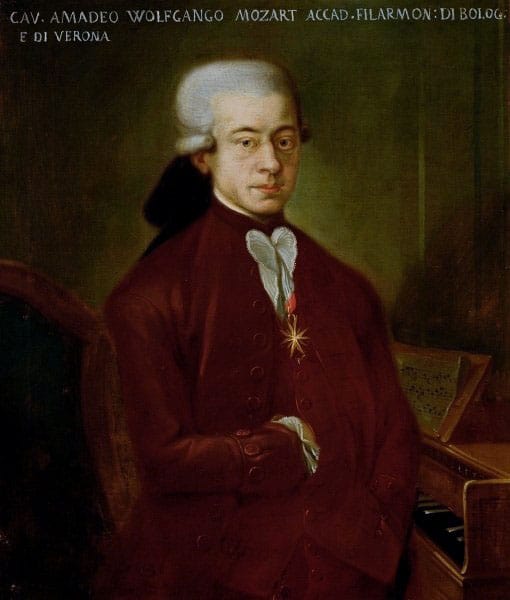
Artikler
På dansk – Norsk – Engelsk – Tysk
På dansk :
Leksikalt:
Wolfgang Amadeus Mozart (Denstoredanske.dk)
Wolfgang Amadeus Mozart (Wikipedia.dk). Mindre musikhistorisk dansk biografi, men bedre linket, bla. til leksikale artikler om værkerne.
Artikler:
”Tryllefløjten”: Oplysningstidens moder- og faderroller. Af Raymond Swing (Raymondswing.com, 2008, 6 sider).
”Tryllefløjten” er en ganske mærkelig, ja, i høj grad bemærkelsesværdig
opera …”
Figaro og den franske revolution. Af Alan Woods (Revolution, 6. juni 2007).
“For sin del var Mozart ikke en revolutionær i politisk forstand. Men han var et barn af sin tid, et produkt af oplysningstiden, der på fremragende vis var i stand til at afspejle sin periodes generelle klima i sin kunst. Han blev opfanget af den oprørske ånd, som glimrende blev afspejlet i hans eget temperament.”
”Don Juan”: Et samfundsmæssigt studie i seksualitet. Af Raymond Swing (Raymondswing.com, 2006, 6 sider).
“Når den stadig griber os, hver gang vi hører Mozarts musik, må de samme forhold stadig have en vis gyldighed i dag, selv uden sådanne normer og faktorer, som vel for længst skulle være sat ud af kraft …”
En popstar fylder år. Af Alfred Lang (Modkraft.dk/Kontradoxa, 25. august 2006).
“Mozarts geni skal hædres med kritiske tanker som antitese mod udglattende kommercialisering … Socialiseringen af et geni udenfor enhver konvention var dengang dømt til at mislykkes i et absolutistisk systems hierarkisk-autoritære samfundsstrukturer.”
Med litteraturforslag på dansk.
Senere ajourført udgave: Mozart: en popstar’s ups and downs (AutonomInfoservice.net, 6. oktober 2009). Rigt illustreret og med musikledsagelse.
Mozarts død – myter og realiteter. Af Klaus Haase (Arbejderen.dk, Kultur-nyhedskommentar, 30. januar 2006).
“At være genial og dø ung udgør et stærkt grundlag for myter og sladder. Om Mozart findes der mange.”
Var Mozart revolutionær … Af Klaus Haase (Arbejderen.dk, 21. januar 2006).
“Mozart … trådte de første skridt i retning af komponisternes vej væk fra feudalismens åg”.
“… i Forhold til meget andet Opvarmet, Forfinet og Unærende har Theatret i denne Opera, som det hedder i Husholdningssproget, et godt Saltmadsstykke …”
Ved vor værdige Br. Mozarts død (Dansketaler.dk).
Karl Friedrich Henslers tale i anledning af Mozarts død, i logen “Zur neugekrönten Hoffnung” i Wien, 24. april 1792.
På norsk :
Kven treng vel Beatles? (Klassekampen, 27.1.2006)
“Spørsmålet er feil stilt, svarer Eyvind Solås på vårt spørsmål om 250-årsjubilanten Mozart er like stor som Beethoven – spørsmålet er om Beethoven er like stor som Mozart.”
Auf Deutsch :
Mozart retten! Aber vor wem? Von Björn Gottstein (Die TageszeitungTAZ, nr. 7882, 27.1.2006).
“Wolfgang Amadeus Mozart ist der problematischste Komponist der Welt. Heute begeht die Welt seinen 250. Geburtstag. Aber was haben wir überhaupt an ihm? Gibt es einen Mozart jenseits der übermächtigen Klischees von Heiterkeit und Entzücken?”
In English :
Mozart’s music in revolutionary times. By Nicole Colson (Socialist Worker, Issue 584, April 14, 2006).
“A genius shaped by political and social upheavals.”
Mozart: musical beauty in an age of revolution. By Simon Behrman (Socialist Worker, Issue 1984, 21 January 2006).
“..we still have so many works from Mozart that bring to life, over 200 years later, the excitement and hopes of his revolutionary age.” + “Discovering Mozart’s classics” [scroll down].
Mozart: Genius, artist and revolutionary. By Paul Morris (Permanent Revolution, 1991; online at Internet Archive).
“We can only understand Mozart – if we situate him finally within the ideological movement which accompanied the rising bourgeois revoluÂtion; the so-called Enlightenment.”
A season of Mozart. By Rod Webb (Green Left Weekly, Issue 19, July 3, 1991).
“Mozart was, however, less the great thinker than the consummate artist reflecting the shifts of public sentiment in those revolutionary times, and he was always mindful of who was paying for his supper.”
Mozart turns two hundred and fifty. By Laura Villon (World Socialist Web Site):
Part I: The German Enlightenment and Amadeus (4 May 2006).
Part 2: Paris and London (5 May 2006).
Part 3: The Italian and German classical styles (6 May 2006)
Part 4: Mozart in Vienna (8 May 2006)
Part 5: The Classical period: Mozart and Haydn (9 May 2006).
A fresh look at Mozart. By Verena Nees (World Socialist Web Site):
Review articles: Der Fall Mozart. Aussagen über ein missverstandenes Genie (The Case of Mozart: Testimony about a Misunderstood Genius), by Helmut Perl, Zürich Mainz 2005.
See also:
What Amadeus gets wrong. By Clemency Burton-Hill (BBC/Culture, 24 February 2015)
The film Amadeus “distorts the truth but we are right to remember it as a classic.”
Biographies/Biographies
Dictionary:
Wolfgang Amadeus Mozart (Wikipedia.org). Template at buttom relates to Family – Biography – Works – Influences
Category: Wolfgang Amadeus Mozart (Wikipedia.org). Articles on and related to Mozarts life and works on Wikipedia.
Mozart: Overture to revolution. By Paul McGarr (International Socialism, Issue 52, Autumn 1991, p. 95-128). Se under Litteratur nedenfor for udgave som bog.
Wolfgang Amadeus Mozart (Wikipedia.org). Stor ret apolitisk artikel, men med mange link og referencer.
Cronology (The Mozart Project). (Se nedenfor).
Cronology by year 1759-1791: Mozart’s Life , Compositions, World Events.
Mozart Biography: Wolfgang Amadeus Mozart (1756-1791). By Gary Smith (31.12.2003) (The MozartForum; se nedenfor). God, mere materialistisk opfattelse af Mozarts liv og værker.
Sites
The MozartForum. By Catherine Carl et al. (2004-2013) (online at Internet Archive WayBackMachine)
“… free educational site is dedicated to the discussion of the music, persona … to improve the intelligent discussion and discourse of Mozart and his world as found on the Internet.”
Forum – The Köchel Catalogue – Biography – Images (Mozart’s Portraits) – Who’s Who ? – The MozartForum Library (Articles, Book Reviews, The Essential Works of Mozart, Recorded Mozart Fragments) – Links (Institutions, Articles and Studies, Reference and Research Sources, Places of Interest, Contemporary and Composer, Sites, Mozart’s 250th Celebrations, Annual Festivals, Performer Pages, Books, CD’s, DVDS, Sheet Music, Periodicals, Opera Sites, Radio Sites, Goodies!)
The Mozart Project: The life, times and music of Wolfgang Amadeus Mozart. By Steve Boerner (1996-2011). Revised 2011.
With Biography and Compositions.
Neu Mozart -Ausgabe (NMA): Neue Ausgabe sämtlicher Werke/New complete edition [in English] Geplant sind ca. 130 Bände. Bisher erschienen sind 125 Bände. (2005). Formelt bibliografisk site.
NMA online – Databases- Mozart in the Web – Akademie für Mozart-Forschung – Internationale Stiftung Mozarteum.
Neue Mozart-Aufgabe (Wikipedia.org)

Musik/vide/audio/downloads
Classical Music Archives : Mozart. (Største musik-fil samling, free membership “Access only 5 unprotected files/day, no MP3 downloads).
Classical.com Site med søgning på komponister og på kunstnere. Site med links (fx til YouTube) for downloads af mere end 500 værker af W.A. Mozart i forskellige udgaver mv.
Værker
Samlede værker/ Collected Works:
List of compositons by Mozart (Wikipedia.org).
Udvalgte værker Mozart gennemgås med links til nogle grundige gennemgange og lydfiler.
Også liste over værker med særskilte artikler: Category: Compositions by Wolfgang Amadeus Mozart.
Også komplet liste opstillet efter Köchel nummer, hvor værkerne betegnes med K eller KV. Se: Köchel-Verzeichnis (Wikipedia.org).
Enkelte værker / Single works:
Le Nozze de Figaro/Figaros Bryllup (1786):
Figaro and the French Revolution. By Alan Woods (In Defence of Marxism, 9 May 2001). I dansk oversættelse: Figaro og den franske revolution (Revolution, 6. juni 2007).
The marriage of Figaro (Wikipedia.org).
Don Giovanni/Don Juan (1787):
Don Giovanni (Wikipedia.org)
Enten – Eller (1843). 2: Erotikkens element. Af Iben Holk (Epoke – danske romaner før 1900). “Søren Kierkegaards tekst om Mozarts Don Juan er genudgivet i 1968 og behandlet af Niels Barfoed i 1978.”
Kierkegaard og operaen »Don Giovanni« (pdf). Af T. H. Croxwall (DMT, årgang 31, nr.1, 1956, side 3-9)
Narcissisme: Søren Kierkegaards identificering med Mozarts Don Juan (Sebastian-swane.dk). Sammendrag af foredrag holdt af Sebastian Swane på Nationalmuseet i København 2001, 3 sider.
Don Juan som playboy. Af Jørgen Lund (Modkraft.dk/Modkultur, 4. maj 2011)
Don Giovanni at the ENO. By Sabby Sagal (Socialist Worker, Issue 2229, 27 November 2010; online at Internet Archive).
Shaw and the Don: George Bernard Shaw’s reception of Mozart’s “Don Giovanni. By Gareth Cox (Minerva – An Internet Journal of Philosophy, Vol. 2, nov. 1998).
Sex trancends the barriers. By Sabby Sagall (Socialist Review, Issue 290, November 2004). Review of ‘Don Giovanni’ by Wolfgang Mozart, English National Opera.
Reviews: Don Giovanni – Royal Opera House by Sabby Sagall (Socialist Worker, Issue 2119, 20 September 2008; online at Internet Archive).
La Clemenza de Tito/Titos nåde (1791):
A conspiracy theory. By Sabby Sagall (Socialist Review, Issue 294, March 2005). Review of ‘La Clemenza di Tito’, David McVicar, English National Opera, London and ‘The Magic Flute’, David McVicar, Royal Opera House, London.
Die Zauberflöte/Tryllefløjten (1791):
Die Zauberflöte (Wikipedia.org). Om operaen Tryllefløjten.
The Magic Flute (Wikipedia.org). Om Ingmar Bergmans filmatisering af Tryllefløjten.
New Light and the Man of Might – Revisiting Early Interpretations of Die Zauberflöte. By Rachel Cowgill (pp. 194-221 in: Art and Ideology in European Opera: Essays in Honour of Julian Rushton. Ed. by Rachel Cowgill et al, Boydell Press, 2010 (Google Books, ill. missing)

Litteratur
(Books etc.)
Mozart: Overture to revolution. By Paul McGarr (London, Redwords, 2001, 80 p.). (Serie: Revolutionary Portraits; 2; online at Marxisme Online). (Sælges i Danmark: Modstand.org).
“Mozart is a modern-day icon, worshipped as an incomparable artistic genius utterly divorced from the social struggles of his day. Paul McGarr gives us a different Mozart, no less gifted but more rooted in the social and political changes that shook the world as it hurtled towards the Great French Revolution of 1789.”
Mozart: ‘Class Conflict and Enlightenmentnt’, in Viva la Liberta! : Politics in Opera. By Anthony Arblaster (London, Verso, 1992, p.13-44).
(Se også: Viva la libertad : Politics in Opera Viva . Written by unregistered (Planet Papers) [referat af bogen].
First 10 pages of Introduction at Questia.com/library
Mozart and the Enlightenment: Truth, Virtue and Beauty in Mozart’s Operas. By Nicholas Till (New York, W. W. Norton & Co., 1992).
W.A. Mozart by Hermann Abert, edited by Cliff Eisen, and translated from the German by Stewart Spencer (Yale University Press, 2007, 1600 p.).
Anmeldelse af bogen: The Best Book on Mozart. By Charles Rosen (The New York Review of Books, No.16, October 25, 2007).
Online downloadable: German 1922-edition, 228 pages ! (US Archive.org)
Auf Deutsch: W.A. Mozart. Neubearbeitete und erweiterte Ausgabe von Otto Jahns Mozart 7. Auflage, Leipzig 1955/1956 (.
W.A. Mozart : 1756-1791 By Paul Nettl. (Hasselbachs Fagbøger, 252 sider+ Suite for Klaver, 8 sider)
Diverse om opera
People in class houses. By Chris Harman (Socialist Review, Issue 196, april 1996).
Marxism and opera. By Louis Proyect (Marxmail.org, 25 May 2002).
Om samtiden m.m.
Lorenzo da Ponte (Wikipedia.org).
Se også/se also: Marx and Engels on Music. By Mark Lindley (MR Zine, 18.08.2010)
Se på Socialistisk Bibliotek:
Linkboxen: Oplysningstiden / Enlightenment




